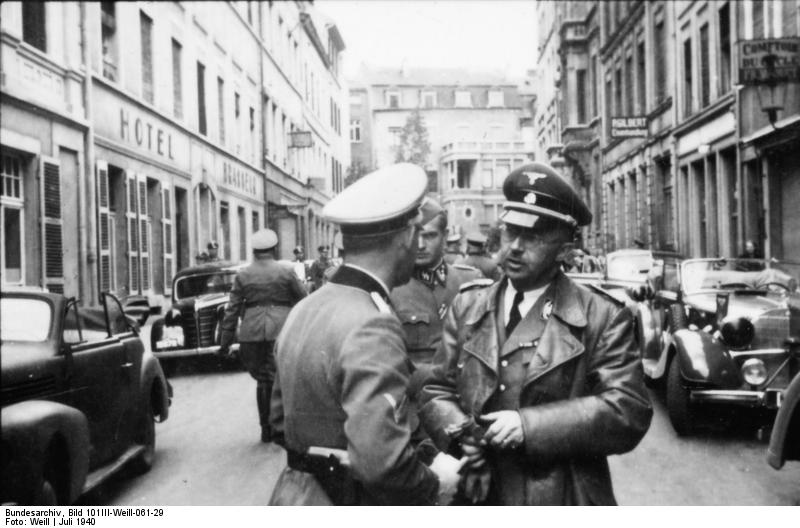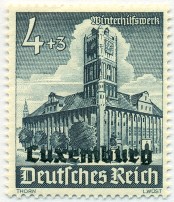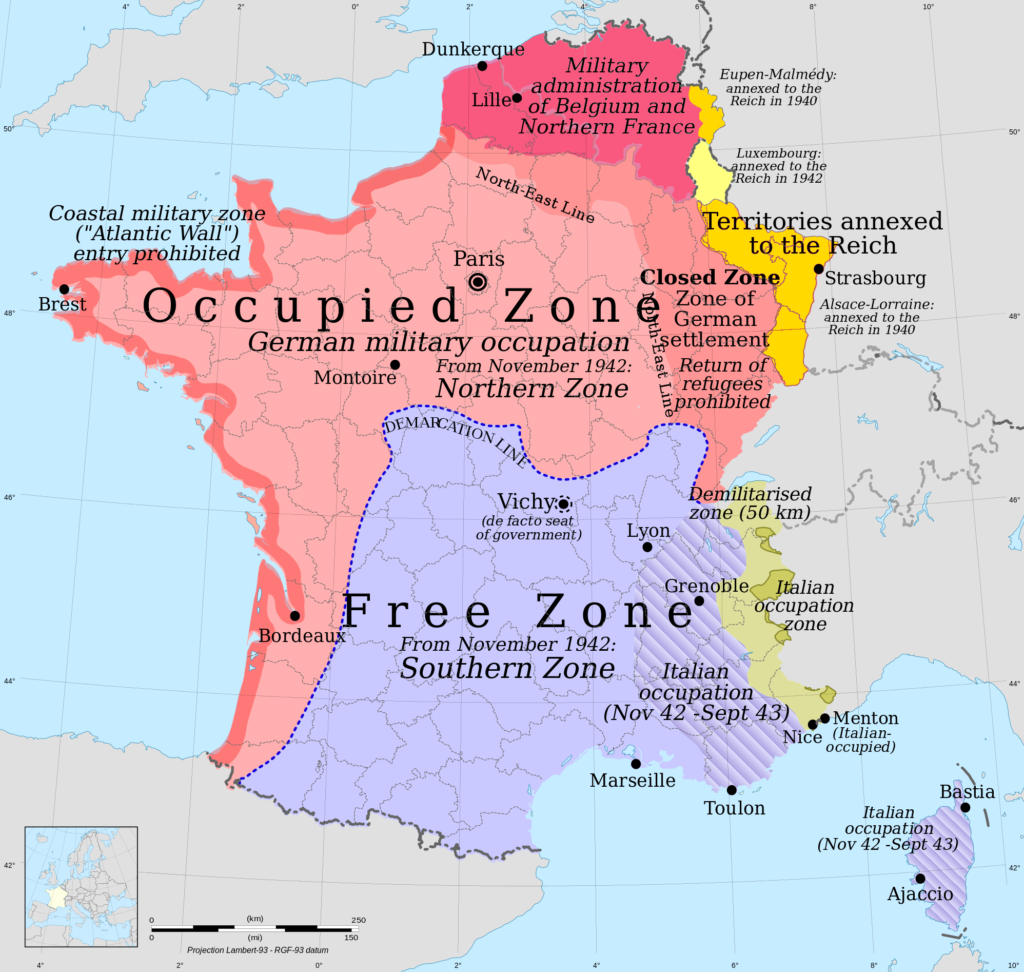ALBUM – German Occupation of Luxembourg in WW2
Summary
The Grand Duchy of Luxembourg is a small country bordering Belgium, France and Germany. In May/June, 1940, Nazi Germany invaded western Europe, taking Belgium, the Netherlands, Luxembourg, and much of France. Under occupation, the Nazis began a program of forced “germanization,” considering the Luxembourgers to be ethnic Germans. Eventually the people of Luxembourg were made German citizens on Jan 1, 1942 when the Duchy was fully annexed into Germany. The Occupation was harsh as the Jews were expelled or taken to concentration camps and young Luxembourger men were forced to serve in the German Army. Allied forces eventually drove the Nazis out of Luxembourg City on Sept 10, 1944.
Fast Facts
Region: Western Europe
Group: German Occupations
Classification: Military Occupation
Prior Regime: Grand Duchy of Luxembourg
Key Dates:
1940, May 10–Jun 25 – The Fall of France, Belgium, Netherlands and Luxembourg
1942, Aug – Luxembourg was annexed into Germany
1942, Aug 30 – Luxembourg men began being drafted into the German Army
1944, Sept 10 – Allied forces liberate Luxembourg City
1944 Sep 10 – 1945, Apr 12 – Allied Occupation of Luxembourg
Following Regime: Grand Duchy of Luxembourg
First Stamp Issued: Oct 1, 1941
Scott Catalog: Luxembourg N1-N31, NB1-NB9
Pick Catalog: France R-135-140 (currency for all occupied areas)
Brief History of the German Occupation of Luxembourg

source: German Federal Archives
On May 10, 1940, Nazi Germany launched an assault the European lowland countries, as a precursor for invading France. The Germans quickly overrun the small country of Luxembourg in less that a day. After six weeks of relentless attacks, German forces firmly held Belgium, the Netherlands and Luxembourg, as they marched their troops into Paris on Jun 13th. The countries were devastated, and agreed to a full surrender on June 22, 1940. Hitler added to the humiliation by insisting that documents be signed on the same railway car used when Germany had surrendered in 1918.
While the Germans initially indicated that they would allow Luxembourg to retain its identity, the Nazis immediately began a program of “germanization.” Eventually Luxembourg was officially annexed into Germany on Jan 1, 1942, along with Alsace and Lorraine. This annexation made each Luxembourger a German citizen. A mass strike broke out across the country on Aug 20. 1942, when the Nazis announced that men of the Duchy were to be drafted into the German army. The Nazis quickly put down the uprising with extreme brutality and executions.
Jews in Luxembourg were also subject to severe persecution. Synagogues were destroyed and the entire Jewish population was eventually expelled or taken away to concentration camps. In fact, Luxembourg was officially declared “Judenfri” , or Jew free in June, 1943.
As the war continued, the Allies regrouped their forces and the battle for Europe turned. The Allies launched “Operation Overlord”, better known as the Battle of Normandy on Jun 6, 1944. Allied forces pushed eastward and systematically began retaking France. Bitter fighting raged across France, but the Allies were finally able to liberate Paris on Aug 25, 1944; a great moral and strategic victory. Continuing eastward, Allied armies were able to re-take Luxembourg City on Sept, 10, 1944, and entirely ridding the country of German forces by January.
The Grand Duchess Charlotte returned to Luxembourg on April 14, 1945, greeted by cheering crowds.
Stamps
 ALBUM
ALBUM
After the invasion and occupation, Luxembourg stamps continued to be valid until Sept 30, 1940, when new stamps were issued, German occupational forces overprinted “Luxembourg” on sixteen denominations (3pf to 100pf) of German Reich Hindenburg stamps, releasing for sale on Oct 1, 1940. The same stamps, were overprinted for use in Alsace (Aug 15, 1940) and Lorraine (Aug 21, 1940) as well. Stamps of Luxembourg, Alsace, Lorraine and Germany were valid in all regions including Germany proper. Mixed frankings were not uncommon. These stamps were used until Jan 1, 1942.
Pre-war definitive stamps of Luxembourg were surcharged in German currency and issued on Dec 5, 1940. The 13 lower denominations were surcharged on stamps depicting the portrait of the Grand Duchess Charlotte, who lived in exile in the west. The 3 higher values were surcharged on pictorial issues. These stamps were only valid until Mar 31, 1941, less than 4 months after release.
Occupational forces also issued semi-postal charity stamps. Charity stamps of Germany were overprinted “Luxembourg” and issued on Jan 12, 1941. The nine denominations featured images of famous German castles and buildings. The additional surcharge was designated to support winter relief in the occupied territories. These stamps were valid until Jun 30, 1941.
When Luxembourg was annexed into Germany on Jan 1, 1942, Luxembourg overprints were no longer valid, replaced by postage stamps of the German Reich.
Banknotes
In 1939, the Germans issued currency to be used in all occupied areas (Belgium, Denmark, Greece, France, Luxembourg, Norway, Poland, Soviet Union, Yugoslavia). Six notes were issued in the following denominations: 50 pfennig, 1, 2, 5, 20, 50 mark.
Links
Ordeal of the Second World War at the Official Portal of Luxembourg
German Occupation of Luxembourg in WW2 from WikiVisually
Destruction of the Jews in Luxembourg – from the Holocaust Research Project
Article in the Luxembourg times on the return of Grand Duchess Charlotte
German Occupation of Luxembourg in WW2 from Totally History
Luxembourg – German Occupation Stamps from Stamp Collecting World





